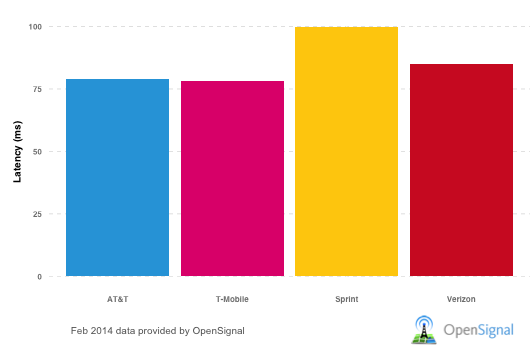Fierce Wireless – in partnership with OpenSignal – has published its most recent wireless network latency comparison. And just like the last one, it’s showing T-Mobile’s network in particularly favorable light. Latency – for those unaware – is a key statistic many ignore and pay no attention too, despite the fact that in real-life use, it makes a considerable difference to the network performance.
As explained by FW:
Latency is defined as the time it takes for a source to send a packet of data to a receiver. Latency is typically measured in milliseconds. The lower the latency (the fewer the milliseconds), the better the network performance.
OpenSignal uses data collected from more than 1 million consumer devices to offer up its data, making it true, real-life information.
Of all the major 4 U.S. carriers, T-Mobile and AT&T’s LTE networks performed best with a latency of between 75-80 milliseconds. Sprint fared the worst, with the highest latency pushing on to 100ms. Verizon was second worst of the four at 85ms.
LTE wasn’t the only network type compared. OpenSignal also compared HSPA/HSPA+, EVDO A and other 3G/4G.
As far as T-Mobile goes, it could only be compared with AT&T when it came to UMTS, HSPA and HSPA+. Its UTMS network outperformed AT&T’s significantly, boasting a latency 104ms vs. AT&T’s 128ms. Magenta’s HSPA+ network also came out on top of Big Blue’s with a latency of 112ms against AT&T’s 123ms. However, in the HSPA competition, AT&T finished top with 131ms vs. T-Mobile’s 134ms. Unsurprisingly, Verizon and Sprint’s 3G network latencies (both EVDO A and eHRPD) were slower than either of its two GSM-based competitors.
With T-Mobile continuing to roll out its super-fast wideband LTE (20+20) network this year, we can expect these latency results to improve even further, at least in the major metro areas Magenta is focussed on.
For the full report, including more graphs and charts, head on over to Fierce Wireless. (Thankfully, they opted for a magenta-colored bar for Tmo this time out.)

